Review - Optec Lepus 0.62X Focal Reducer
Updated: 29 February 2016
 Lepus 0.62X Telecompressor Lens (Focal Reducer)
Lepus 0.62X Telecompressor Lens (Focal Reducer)
Optec
$199 (Lens) + $95 (DSLR Adapter)
The Optec Lepus 0.62X Telecompressor Lens (or focal reducer) turns the f/8 LX600 into a fast f/5 system. The lower f/5 ratio means that shorter exposures can be used and fainter objects can be imaged. It also reduces the magnification and widens the prime focus field-of-view (FOV) in order to image objects such as the entire disk of the Moon (and the Sun, with a proper solar filter) and large nebula. I had frequently used an Antares f/6.3 Focal Reducer with my 8" f/10 LX200-ACF and found it a valuable accessory to have for both visual use and imaging. However, I knew that the Antares focal reducer would not be suitable for use with the f/8 ACF optics on the LX600 telescope and so I asked online and checked with OPT about a good focal reducer for the LX600. The answer was always "get the Lepus". So I did.
The focal reducer consists of two components (see at right and below), the focal reducer and an adapter for your specific camera/imager. I got the Nikon DSLR adapter. I purchased both from OPT.
Unlike the Meade and Antares focal reducers I used in the past, which thread onto the SCT port, the Lepus fits a 2" visual back or focus drawtube. This makes for more versatility in telescope mounting, but also removes some security since the focal reducer and camera/imager are only held to the telescope by the visual back or drawtube setscrew/compression ring. (I play it safe with the DSLR by looping the camera neck strap around the finderscope mount.) Additionally, those other focal reducers had a SCT thread on them which accepted SCT accessories, meaning that visual backs, diagonals, off-axis guiders, and other camera adapters could be used with those focal reducers. Unfortunately, these accessories will not work with the Lepus focal reducer as it has no SCT thread. Nor is it designed for visual use; at least, there is no eyepiece adapter included or available from Optec. Consequently, you can not do afocal imaging using a digital camera or smartphone with the Lepus focal reducer. In my case, this is a not serious deficiency for my 12" LX600 visual use or some afocal astrophotography as I have sufficient long focal length eyepieces to compensate.
The lens (left) and camera adapter (right) are well packaged in their boxes:
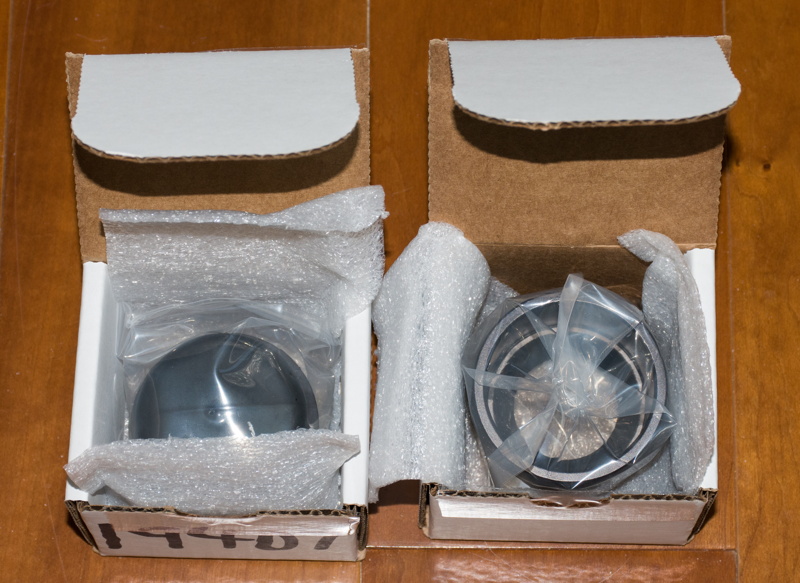
The camera adapter (left) and lens (right) are high quality:
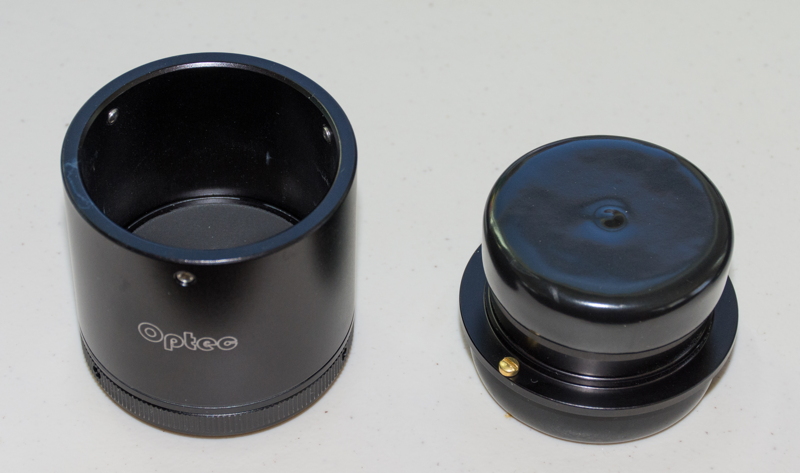
The adapter is secured to the lens using the supplied hex key to tighten three setscrews on the camera adapter:
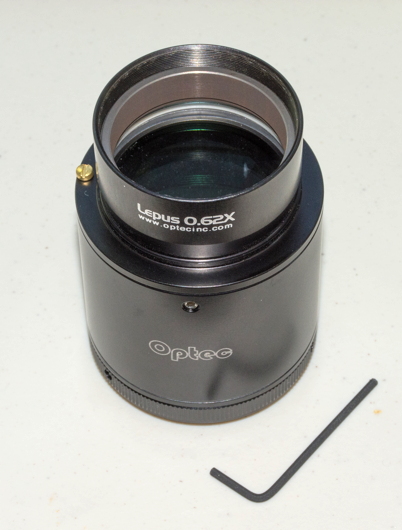
This is my Nikon D7200 DSLR with the Lepus focal reducer attached:
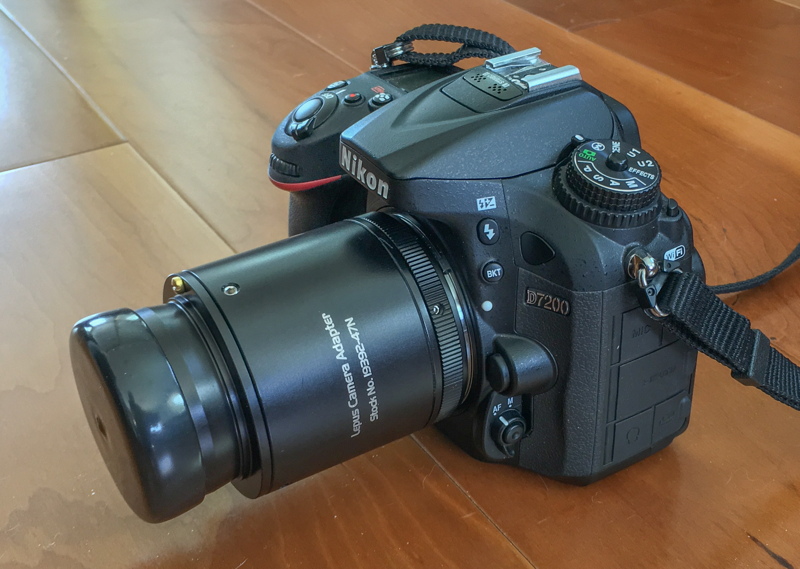
Word of Caution: there is a Technical Note included in the telecompressor box about a brass screw that has to be removed unless your visual back or focus drawtube has a notch on it. Since my visual back does not have this notch it was necessary to remove the screw (seen in the photo above). I quickly discovered that this brass screw is rather "soft" and I nearly stripped the slot in the head before I was able to loosen the screw.
So how does the Lepus focal reducer perform? I tested the focal reducer on my 12" f/8 LX600 both with and without the Meade 2" diagonal. I measured the actual DSLR field-of-view (FOV) in both configurations. Here is the D7200 DSLR and Lepus focal reducer in both configurations, with the actual FOV (degrees, minutes, seconds):
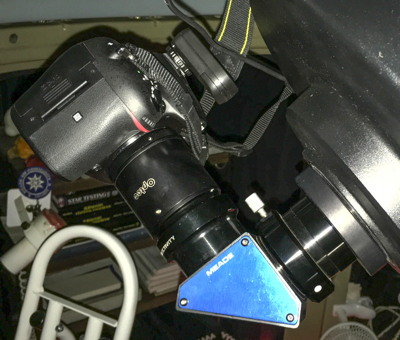
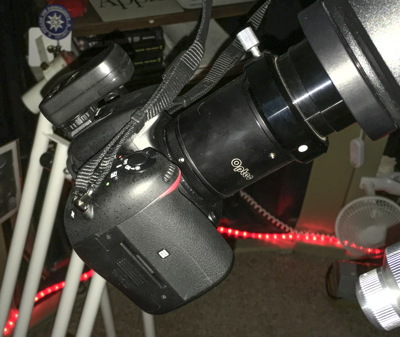


As seen from the FOV measurements, using the Lepus focal reducer without the star diagonal yields the largest FOV. I expect I will be doing most of my imaging with the Lepus using just the visual back.
Go to page 2 - Astrophotography with the Lepus focal reducer.
Comments are welcome using Email. If you are on Twitter you can use the button below to tweet this review to your followers. Thanks.
Cassiopeia Observatory Home Page
Copyright ©2016 Michael L. Weasner / mweasner@me.com
URL = http://www.weasner.com/co/Reviews/2016/Optec_Focal_Reducer/index.html

